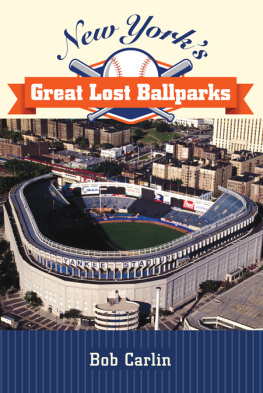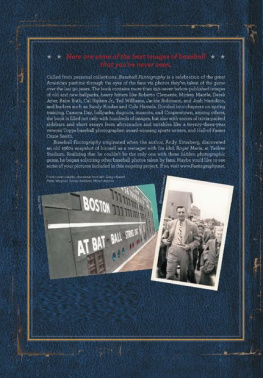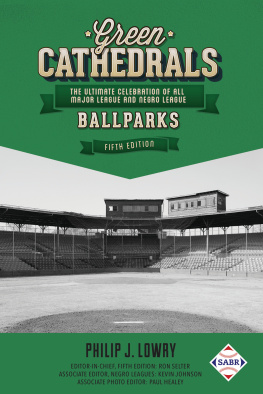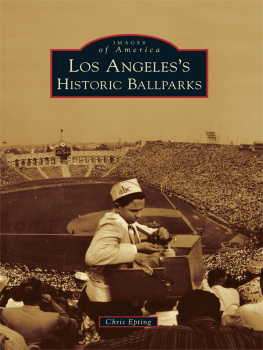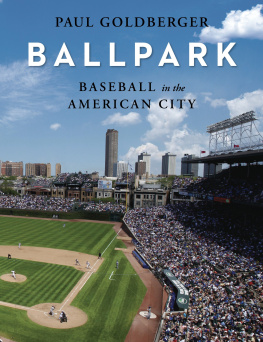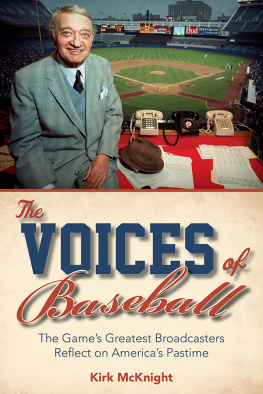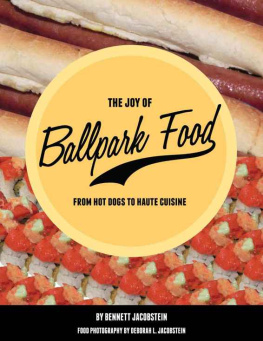New Yorks
Great Lost Ballparks
New Yorks
Great Lost Ballparks
Bob Carlin

Cover: The original Yankee Stadium (I) as photographed by Carol Highsmith in the 1980s. From the Carol M. Highsmith Archive, at the Prints and Photographs Division, Library of Congress.
Published by State University of New York Press, Albany
2022 Bob Carlin
All rights reserved
Printed in the United States of America
No part of this book may be used or reproduced in any manner whatsoever without written permission. No part of this book may be stored in a retrieval system or transmitted in any form or by any means including electronic, electrostatic, magnetic tape, mechanical, photocopying, recording, or otherwise without the prior permission in writing of the publisher.
Excelsior Editions is an imprint of State University of New York Press
For information, contact State University of New York Press, Albany, NY
www.sunypress.edu
Library of Congress Cataloging-in-Publication Data
Name: Carlin, Bob, author.
Title: New Yorks great lost ballparks / Bob Carlin.
Description: Albany : State University of New York Press, 2022. | Series: Excelsior editions | Includes bibliographical references and index.
Identifiers: LCCN 2022006880 | ISBN 9781438490229 (pbk. : alk. paper) | ISBN 9781438490236 (ebook)
Subjects: LCSH: BaseballNew York (State)History. | Baseball fieldsNew York (State)History.
Classification: LCC GV863.N7 C37 2022 | DDC 796.35706/809747dc23/ eng/20220509
LC record available at https://lccn.loc.gov/2022006880
10 9 8 7 6 5 4 3 2 1
Contents
Introduction
Welcome to the world of baseball parks. You see, unlike any other arena, the diamond can be as much a part of the game as the teams themselves. Where the game is played is often as important as how it is played, as each ballpark plays a vital role in creating the atmosphere and mystique of baseball.
David Pietrusza, Baseballs Canadian-American League
Baseball: A (Very Quick) Historical Overview
During the second quarter of the 19th century, the American game of baseball was born. Throughout the United States of that time (which was primarily centered in the Northeast), various versions of what was to become the national pastime began to be played. Setting aside the folklore of Doubleday and Cooperstown (although not diminishing in the least the Baseball Hall of Fame, a place that every fan of the game should regularly visit), according to current scholarship, the amateur game was actively germinating in many parts of the new republic. In the greater New York City area, the sport of cricket, associated with England (against whom the United States had just fought two wars), was gradually giving way to the very American game of baseball. Likewise, the open fields where cricket was pursued were usurped as the initial homes for the game of ball. Albany appears to have had an organized baseball club by 1856, Troy in 1859, and Schenectady, Saratoga Springs, and Scotia by 1860, when the first National Association was formed.
According to early baseball historian Richard Hershberger:
Upstate New York was the first hotbed of modern baseball, the New York Game, as it emerged from the incubation ground of Manhattan and its immediate environs. The game spread quickly up the Hudson River to Albany, and from there westward along the Erie Canal corridor.
By the time of the lead up to the Civil War, the New York game or New York Rules had come to dominate the nascent sport. Touring by professional teams, amateur in name only, spread the New York City structure and led to the emergence after the conflict for the first leagues of paid players. These excursions included trips by New York City based squads to other metropolitan areas throughout the state.
After 1865, baseballs growth continued unencumbered. Seeds for the first professional major baseball league, the National Association, were sown in Troy in 1871. The National League followed in 1876.
Whats a Ballpark, Anyway?
Noun: A park or stadium in which ball games (such as baseball) are played.
Merriam-Webster online
The coming of salaried players, of course, led to the original baseball grounds or fields (which were just that, without any of the amenities weve come to expect from our modern facilities) giving way to the ballparks and (eventually) stadiums of today. How do owners maintain facilities and teams pay their players? Charge admission! How are the spectators who bought tickets kept separate from nonpaying enthusiasts? By building walls and gates around the diamond. How do you keep the fans occupied during the lulls in the on-field action? Sell food and drink, along with scorecards and other swag. Hence, the promulgation, in the later part of the 1800s, of the enclosed ballpark.
With a few notable earlier exceptions, during the last two decades of the 19th century, the first of the facilities with seating and other conveniences opened. The largest of these wooden structures included the Polo Grounds, Washington Park, and Eastern Park in New York City; Buffalos Olympic and Riverside Parks; Celoron Park in Celoron; Rochesters Culver and Riverside Parks; Star Park in Syracuse; Albanys Riverside Park; Donovan Field in Kingston; and Driving Park in Schenectady, among others. The original structures were almost designed to be disposable. They were built quickly, and often dismantled after a season or two. Sometimes, the buildings, stands, and fences were recycled, and moved to a different location. Consequently, it should come as no surprise that collapsing seating and fires were a common occurrence in the nascent good old days of baseball. Between the world wars of the 20th century, modern stadiums of steel and concrete replaced these wooden edifices. Author and baseball aficionado Stew Thornley labels 1909 through the Depression as the classic period of ballparks.
New Yorks Great Lost Ballparks covers all baseball venues (1) that have hosted (my very loose definition of) professional organizations that no longer exist and (2) have passed from use by teams that paid their players and charged admission. Ive stretched this characterization somewhat to include those facilities utilized by the sport since it became a public spectacle. Included are the grounds of baseballs earliest version around the Civil War, the first wooden enclosed fields of major and minor league baseball during the late 19th and early 20th centuries, as well as the steel and concrete stadiums mostly erected through World War II. Ive even thrown in a few modern spectacles costing millions of dollars to construct that have come and gone in New Yorks metropolitan centers.
Both the first grounds and enclosed fields generally sat on privately owned lots. Sometimes, they already included features such as grandstand seating used for the spectators of other sports, like horse and bicycle racing. Franchise holders would lease the land and bear the costs of any improvements needed to yield a functional ballpark. As baseball facilities became more complicated, owners spent larger and larger amounts on fields. The original Yankee Stadium of 1923 signaled the peak in owner-financed sporting palaces.
Eventually, as the budgets for stadium construction ran into the millions of dollars, the proprietors of baseball clubs looked to local municipalities to provide the means for them to play the game. Franchisees and city officials justified these taxpayer costs through the perceived direct and indirect economic benefits games would create for area businesses and tax bases alike.

